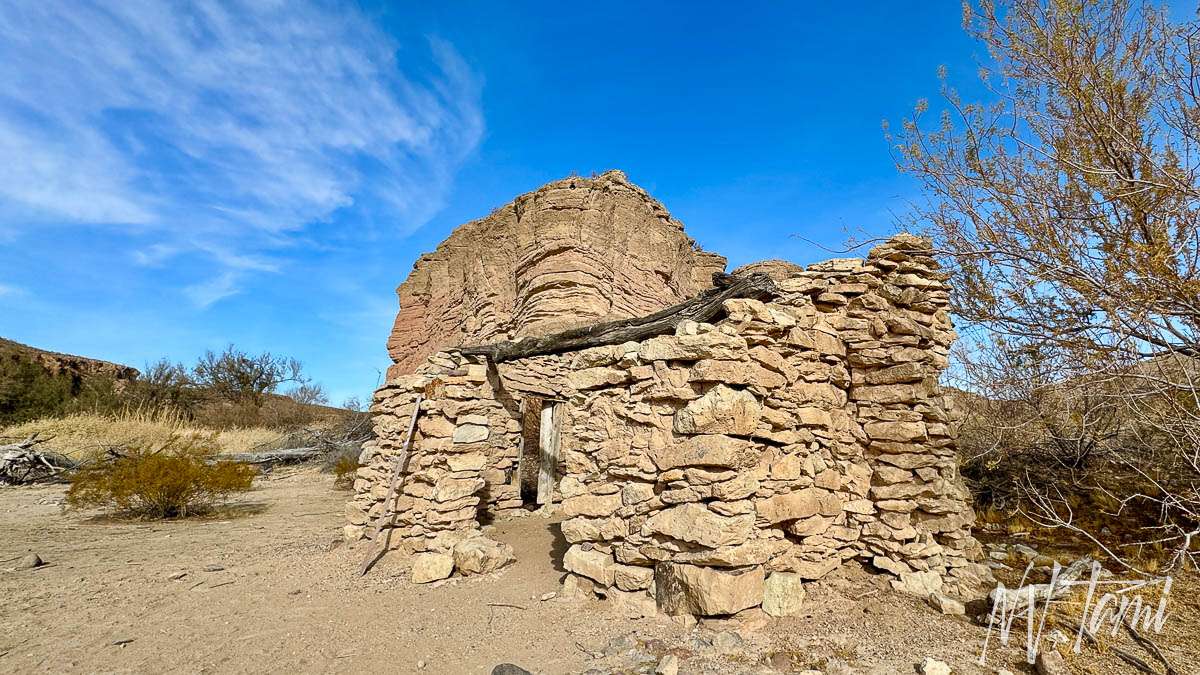
Set against dramatic petroglyph-covered cliffs is the 133-year-old Kane Springs Ranch and the Huntsman Cabin. It is a popular destination for explorers who visit the abandoned rock cabin and unique petroglyphs depicting men in cowboy hats riding horses and wagons.
Who were the people who once called this remote cabin home? How did Emeline Huntsman become the legendary “Lady of the Lantern?”
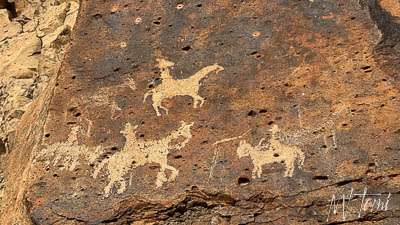
Emeline Davis Bray Hunstman

(Photo credit: Huntsman Family)
Emiline was born to William and Dinah Davies Jones in 1855. Her father died, and Dinah married William Ellis Jones, who later was a schoolteacher in Hebron, Utah. Dinah came from a prosperous family, allowing her to attend school and graduate as a doctor. Dinah passed along her medical training to her daughter, Emeline.

Emeline married David Orin Huntsman. In 1871, the couple had their first child, son James William. They would go on to have ten children, sadly losing one child, Tacy Paralee, at one year of age. In 1875, they moved to Gunlock, Utah. Three years later, in 1878, they relocated to Bunkerville, Nevada and in 1881, to St. Thomas, Nevada.
Kane Springs Ranch and Huntsman Cabin
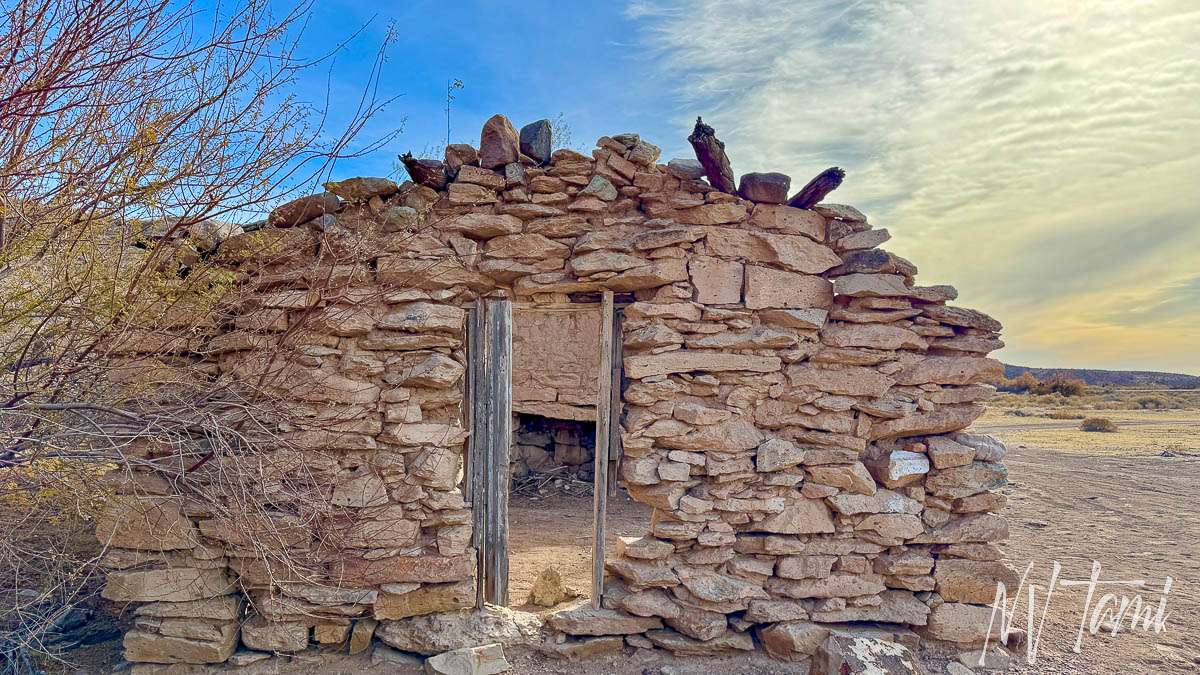
In 1891, the Huntsmans moved to Kane Springs Ranch outside of Moapa. Their 160-acre ranch had a large orchard.

Back row left to right: David, Emiline, Florence Huntsman Adair, Luna, Alonzo, and Hale (a hired hand)
Front row left to right: Julius, Tacy Adair, Ruth Adair, Dan Adair, Frank Hunstman
(Photo credit: Huntsman Family)
Water rights have long been an issue in the Nevada Desert. In 1893, the county clerk ordered the Huntsmans to return water to the main channel. David served as a clerk in multiple county elections.

Pioche, Nevada • Thu, Dec 7, 1893
The Kanes purchased additional properties, including 40 acres at Grapevine Springs.

Pioche, Nevada • Thu, Aug 1, 1895
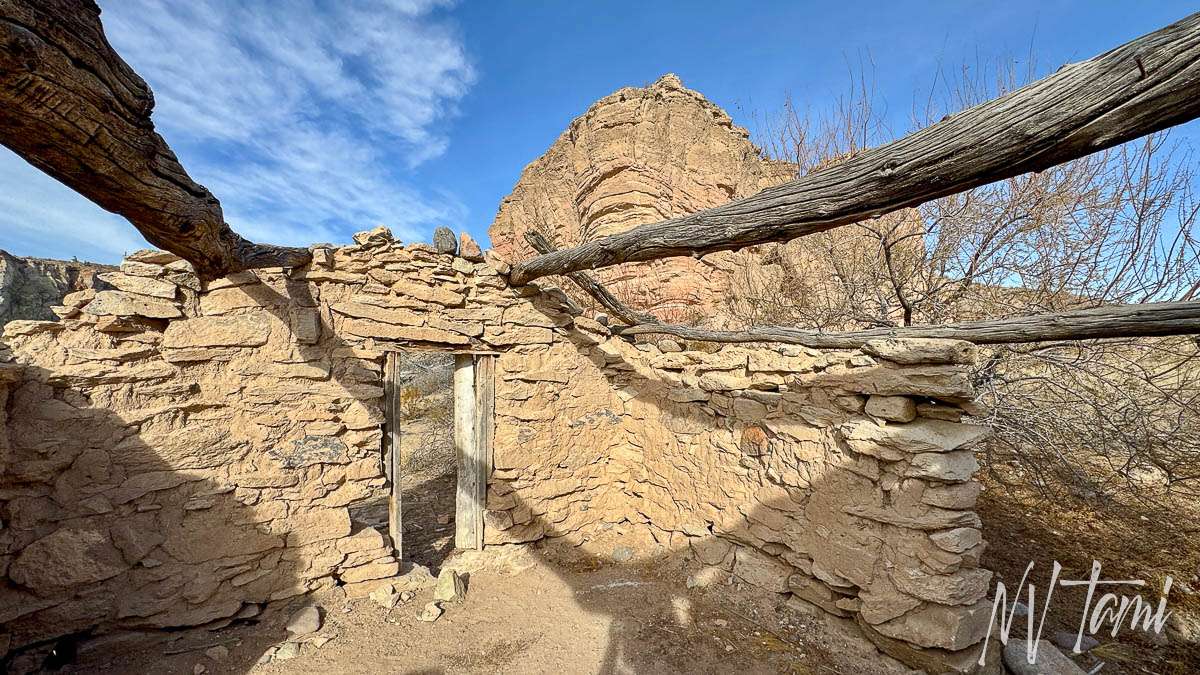
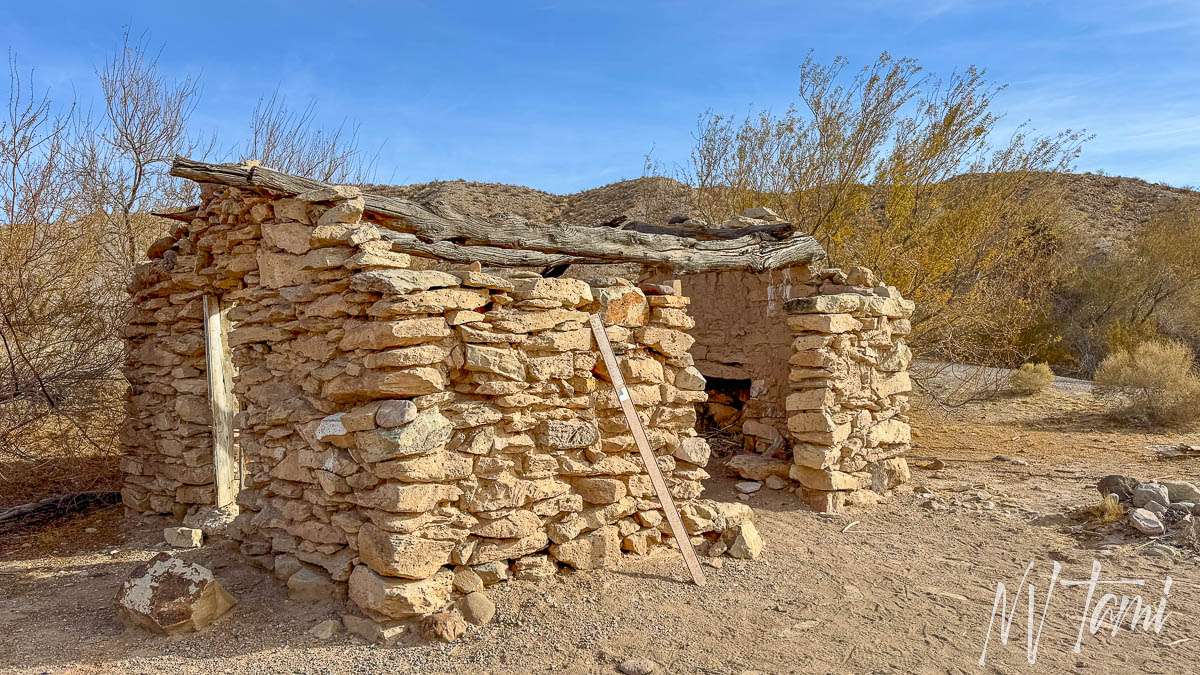
The Union Pacific Railroad arrived in 1905 in Meadow Valley Wash. The line cut through the Huntsman ranch and connected Caliente to Moapa. The Hunstman ranch became known for Emeline’s quality medical care and delicious cooking. The men enjoyed the stop so much that they often made unofficial stops.

Pioche, Nevada • Thu, Apr 26, 1894

(Photo credit: Stephen Thompson)
“Lady of the Lantern”
Emeline was affectionately called “Lady of the Lantern.” She stepped in as the only local doctor and midwife for many years. She traveled with her satchel and lantern, lighting the way and creating her nickname.
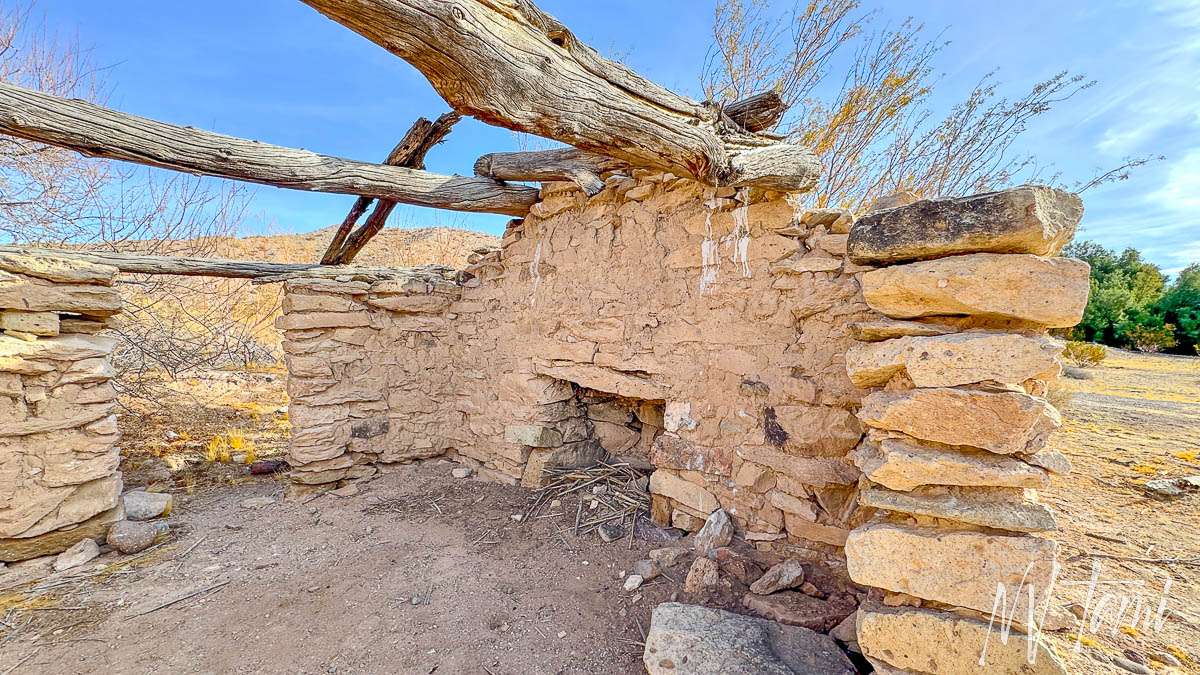
Over the years, Emeline continued to provide medical care for the local families and railroad workers. She would ride up the flooded wash in storms to look for those in need.
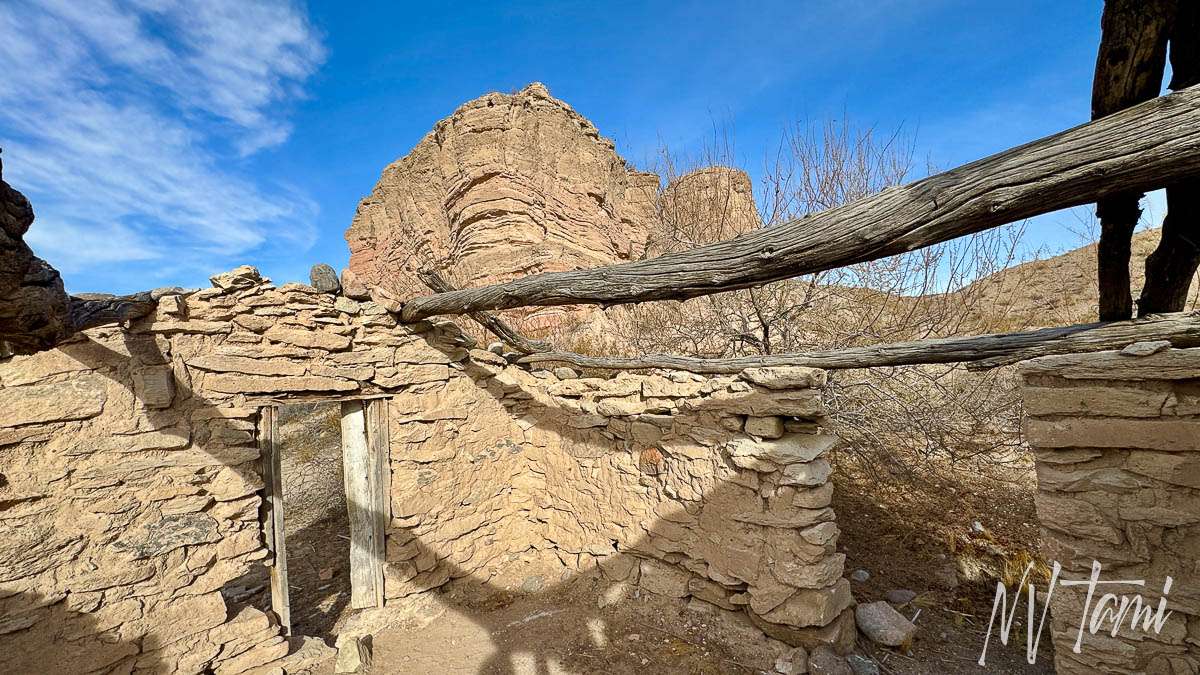
David died in 1907. Emeline’s son was concerned for her safety and wanted her to move, but she insisted the railroad workers would take care of her. She was correct; the railroad men loved their Lady Emmy and looked out for her. Despite outlaws and hobos, Emeline remained at the ranch with the trains stopping to check on her and bring supplies.

(Photo credit: Brett Wirick)
1910 was the monster of all floods. During the storm, Emeline rode to Elgin to deliver the station master’s baby. When she noticed the train from the north did not arrive, she rode to alert the southern train, avoiding a potentially catastrophic situation.

(Photo credit: Nevada Expeditions)
Death of a Nevada legend
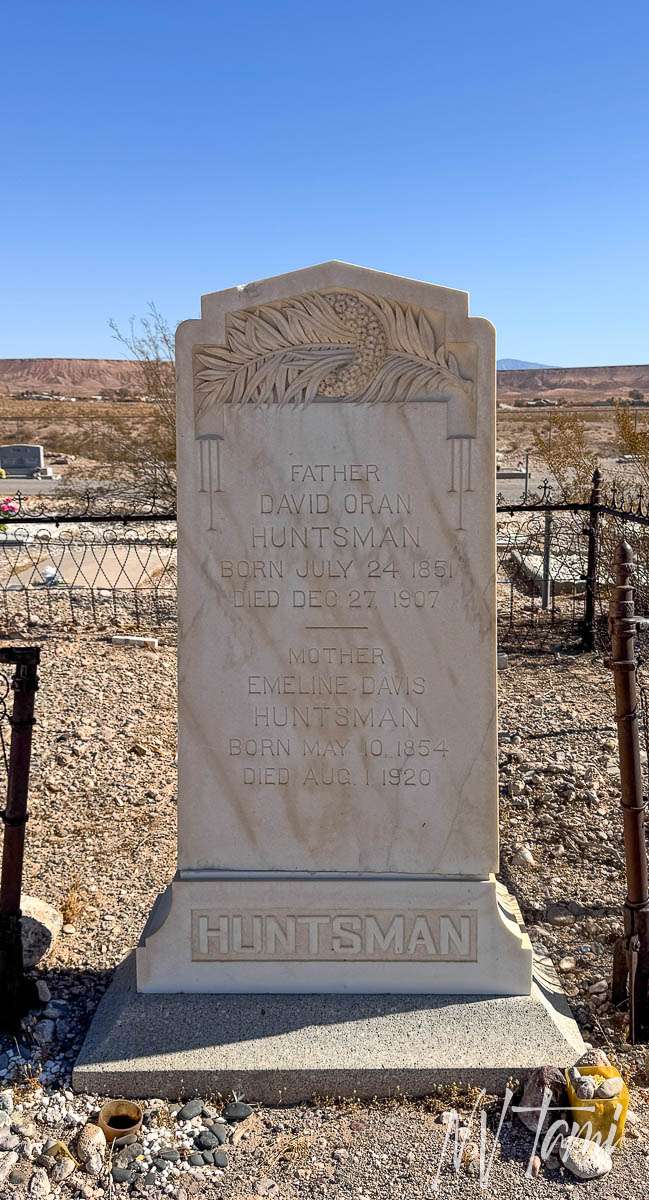
On August 4, 1920, Emeline’s son found her deceased at the ranch. She had been gone for several days; at first, her son thought she might have been murdered, but examination showed she died of a pulmonary hemorrhage.
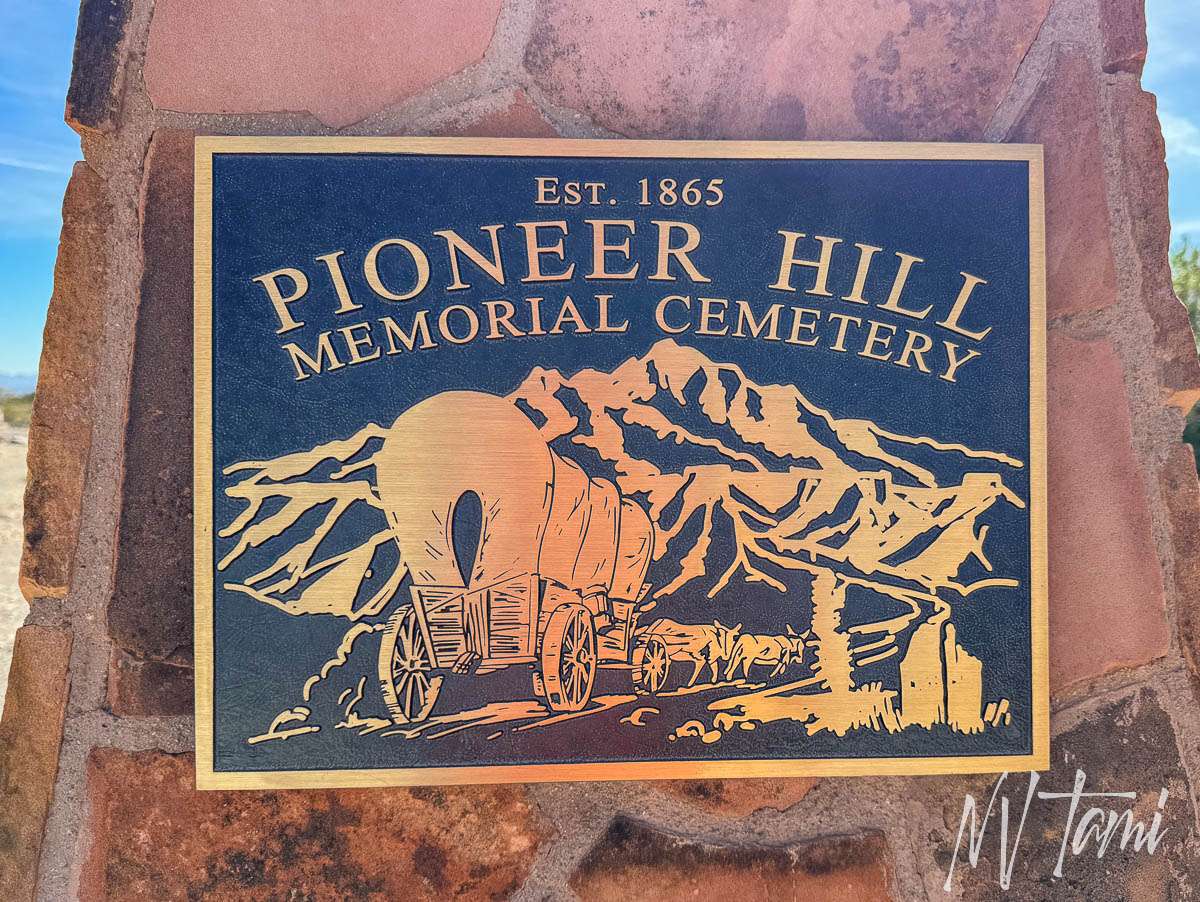
Emeline, “Lady of the Lantern,” was buried at the Pioneer Hill Cemetery in Overton.

Petroglyphs
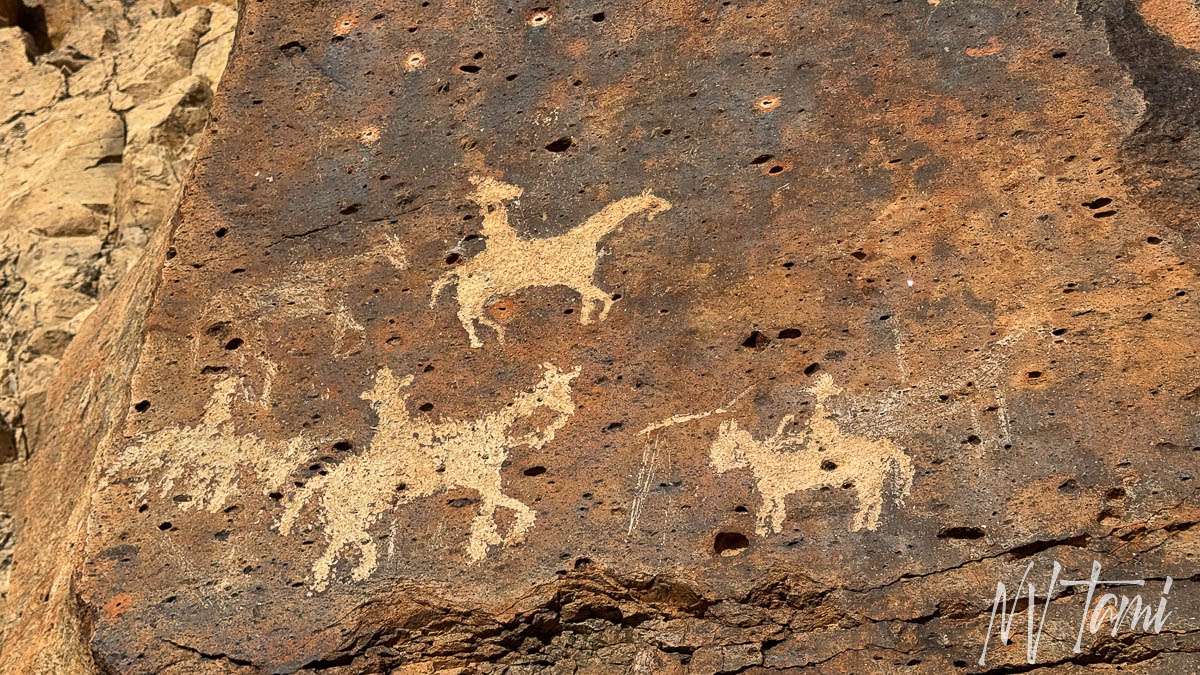
Petroglyphs line the walls of the wash. Many depict big horned sheep. They also contain unusual petroglyphs of cowboys on horses and riding on wagons.
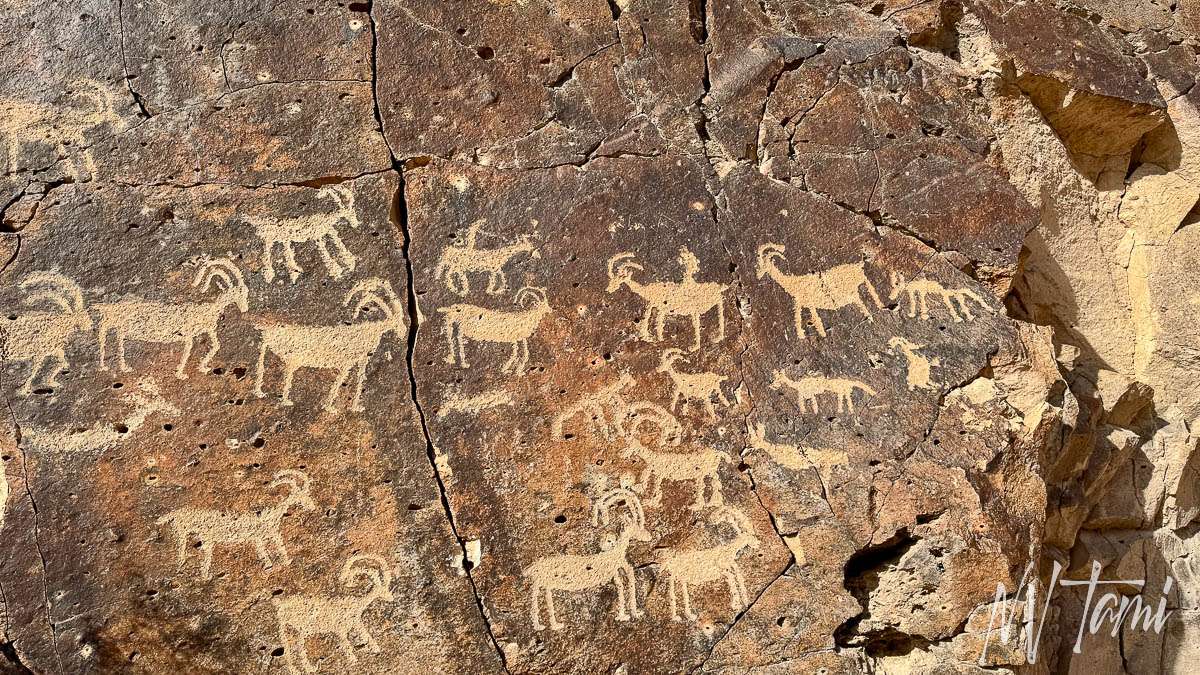
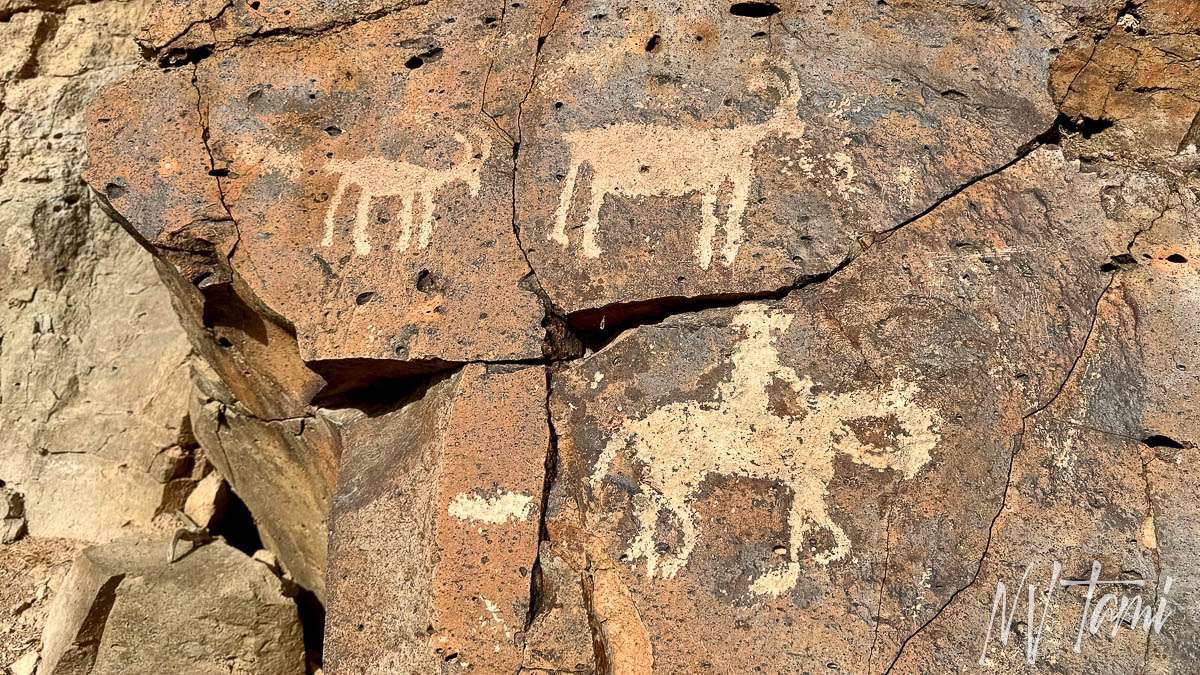
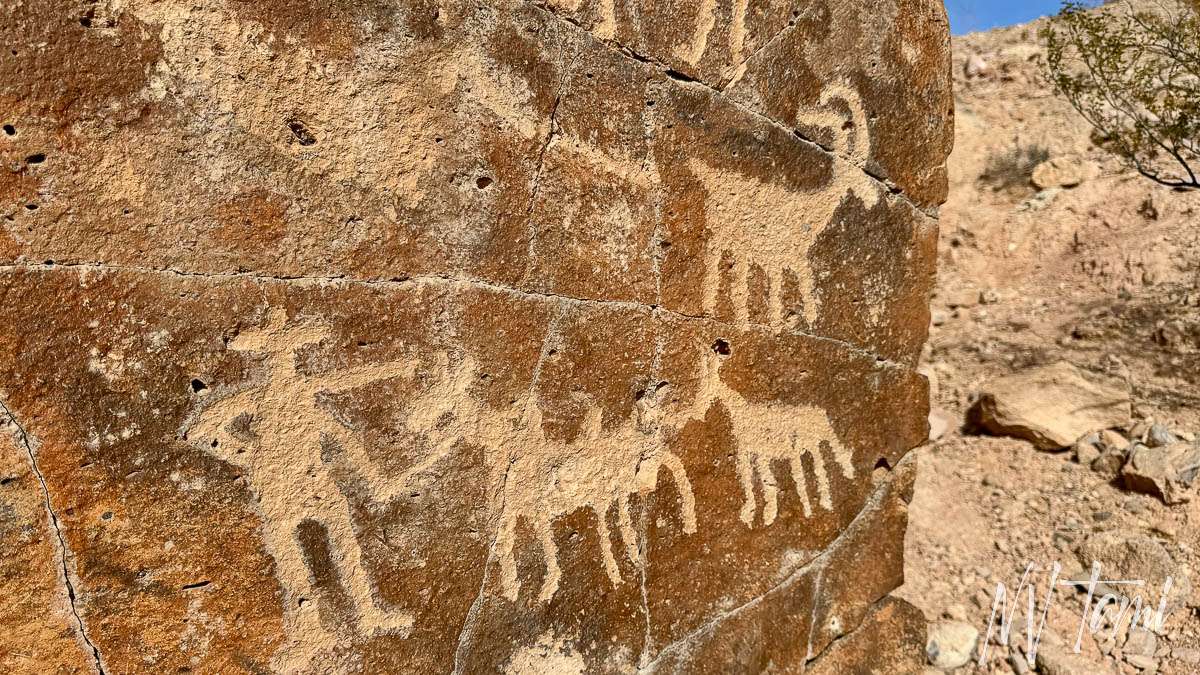
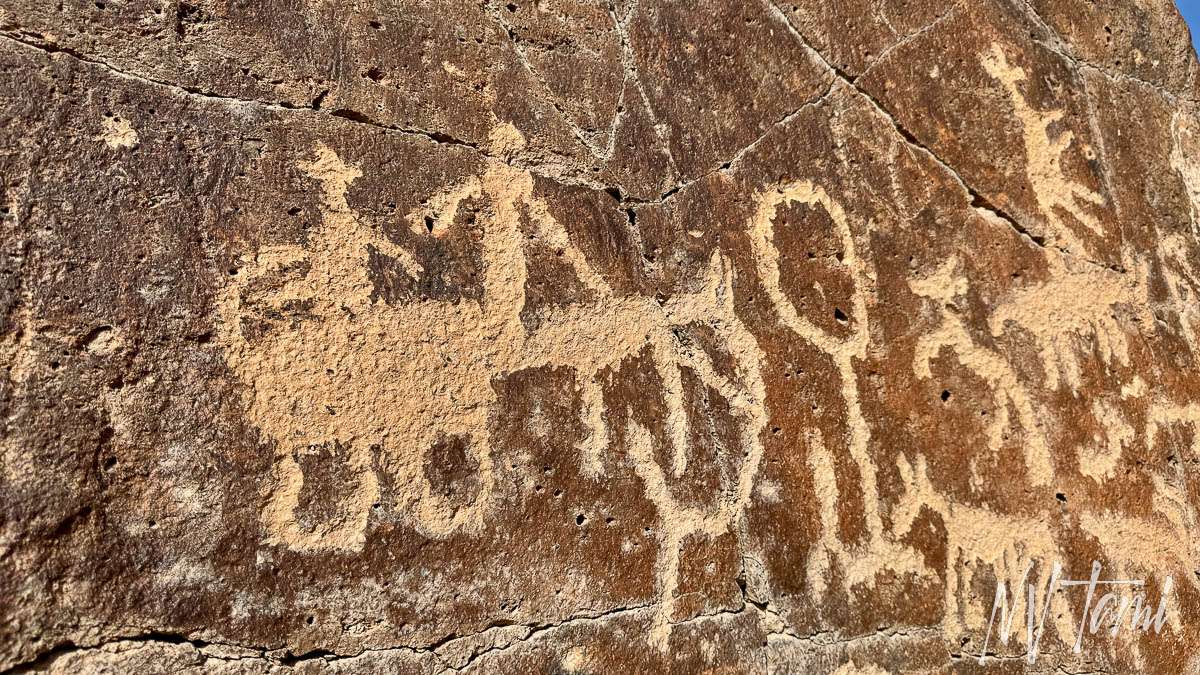
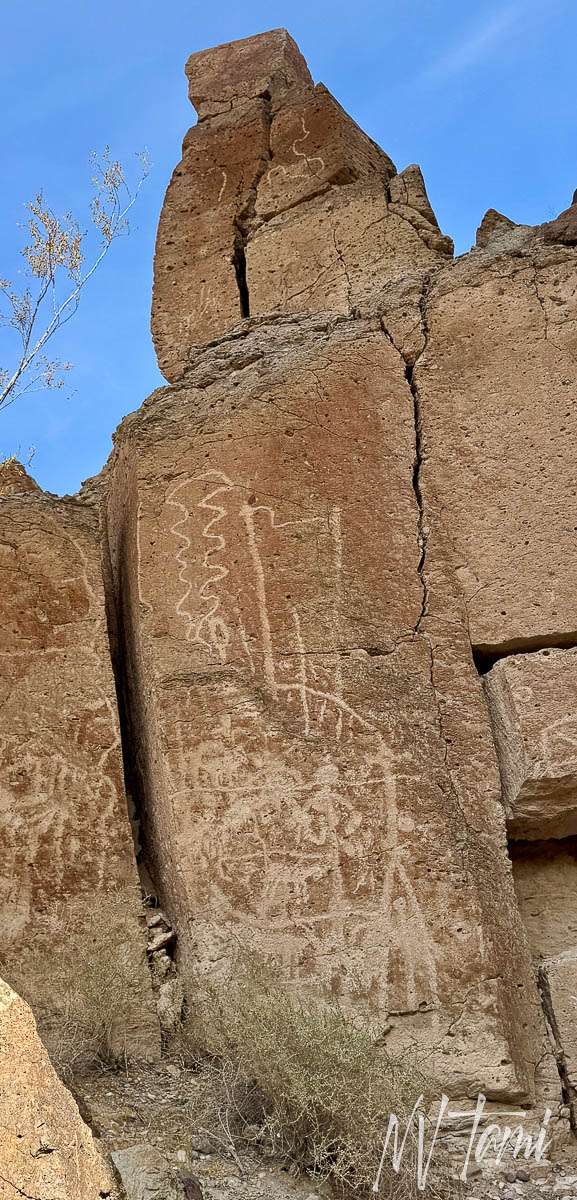
Meadow Valley Wash Graves
Three graves on the Huntsman Ranch lay near the tracks. Who are the occupants of the graves? The infamous “Mouse the Renegade,” outlaws or railroad workers?

Pioche, Nevada • Thu, Jul 22, 1897
Mead Valley Wash was the site of a shoot-out with the infamous “Mouse.” Mouse had been accused of murdering multiple people, including two prospectors. In 1897, a posse, members of the Paiute Tribe, tracked Mouse to Kane Springs. One member of the posse was J.S. Huntsman. None of David and Emeline’s children match the initials, but David’s brother was Joseph Smith from Gunlock. Could he have been visiting and participated in the search?

Carson City, Nevada • Thu, Jul 22, 1897
After several days of searching, the posse found Mouse near Kane Springs. Several of the Pauite rode in advance and called out for Mouse to give up, to which his reply was “shoot S— B—-,” followed by his firing.
An hour battle ensued, resulting in Mouse’s death. His remains were taken to Moapa for identification with no mention of disposition of his remains. The newspaper reported, “The people in Lincoln County now feel safe since the death of the murderous savage.” Mouse’s remains were taken to Moapa for identification. It doesn’t make sense for the posse to return his remains to the Huntsman Ranch. Could he have searched out the Lady of the Lantern for medical care?
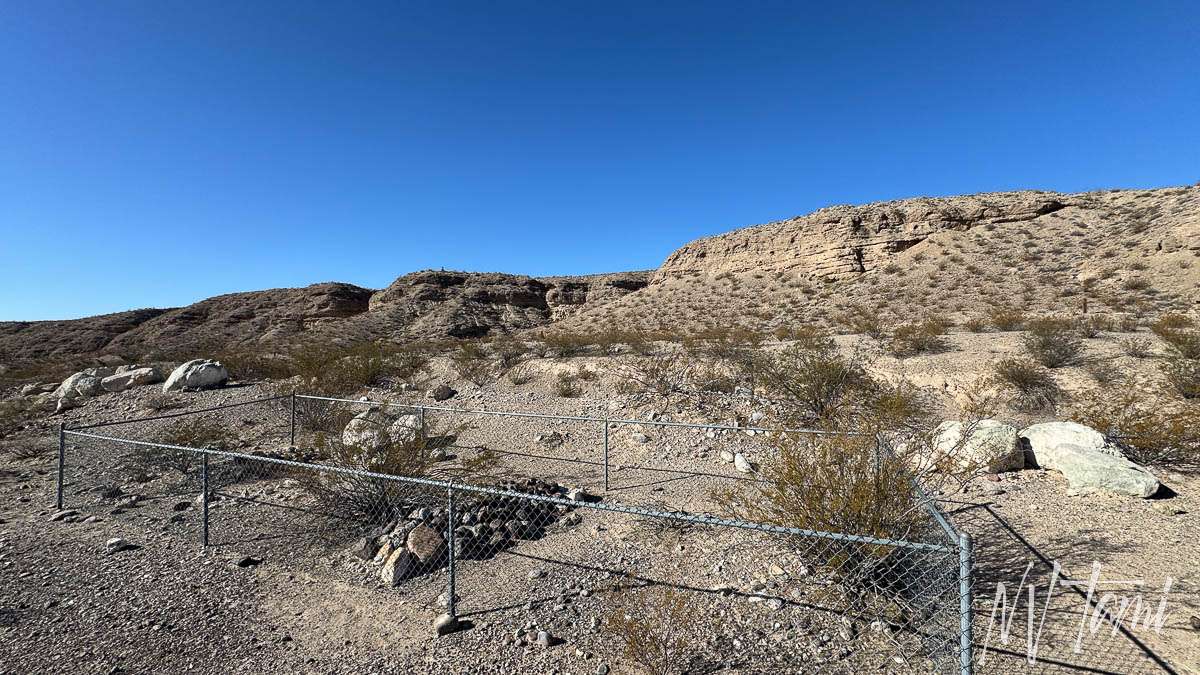
Rumor says the graves are two outlaws and a railroad worker. The Nevada Historical Society says the graves are three unidentified railroad workers from Mexico. Did they seek medical care from the Lady of the Lantern?
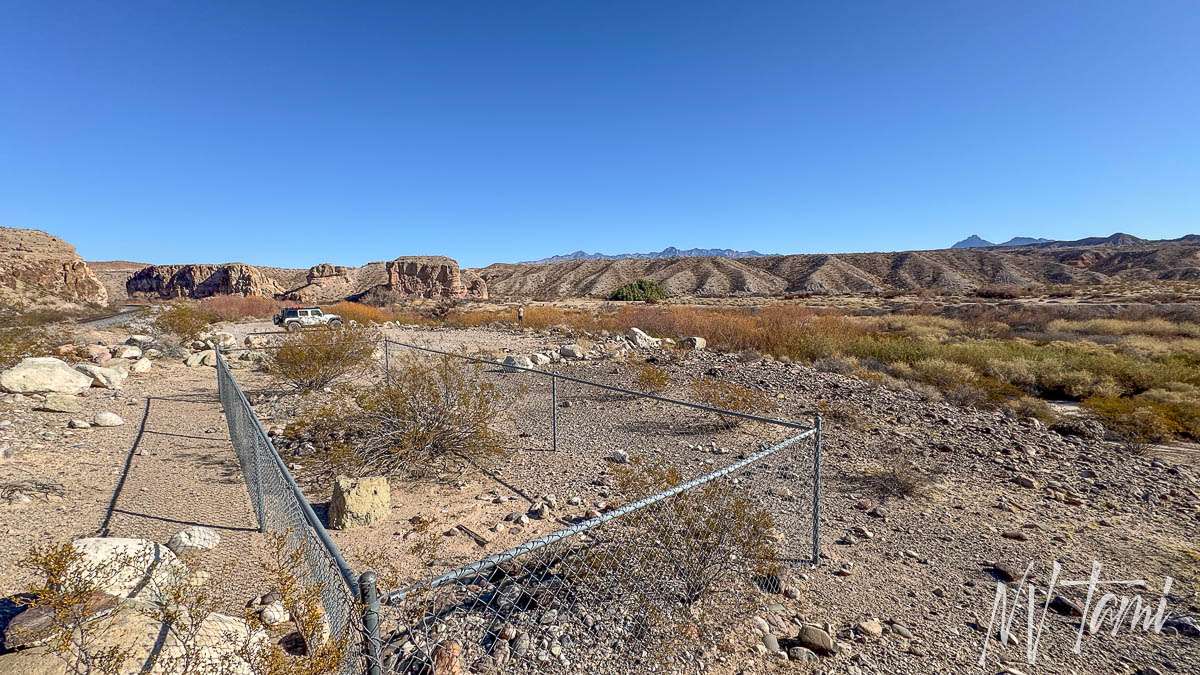
WANT MORE GHOST TOWNS?
For information on more than five hundred ghost towns in Nevada & California, visit the Nevada Ghost Towns Map or a list of Nevada ghost towns.

References
- Biggs, Rosetta. My Memories of Grandmother Huntsman
- The Daily Appeal, Jul 22, 1897
- Family Search
- Find a Grave: Emeline Davies “Lady of the Lantern” Huntsman
- The Nevadan. George, Dustin. Stories of the Old West. August 10, 1869
- Nevada State Journal Mar 20, 1955
- Perkins, Orville. Hookey Beans and Willows 1980.
- The Pioche Record May 31, 1890
- The Pioche Record Dec 6, 1890
- The Pioche Record Feb 5, 1891
- The Pioche Record Dec 7, 1893
- The Pioche Record April 26, 1894
- The Pioche Record Aug 1, 1895
- The Pioche Record Oct 13, 1897
- The Pioche Record Oct 12, 1900
- The Pioche Record July 22, 1897
- Randles, Ruth Adair. Memories of my Grandmother
- Southwest Backcountry: Huntsman Cabin Ruins, Nevada
- UNLV: Guide to the Kane Springs Ranch, Meadow Valley Wash, Nevada Records
Anonymous says
Great story. Thank you.
Tami says
Welcome!
David Sadewasser says
Wow, Tami, great story as always! I can really relate to your mention of the SP train line in Meadow Valley wash. I drove the miserable road through Meadow Valley and got stuck my axle on rocks about 20 miles south of Elgin. I was rescued by a railroad maintenance crew that happened by before I ran out of food and water. Guess I’m alive today because of it.
Tami says
That sounds scary! I want to take the road through the canyons, there are supposed to be a lot of petroglyphs in the area.
Roger Peterson says
Thanks for delivering such interesting stories on a regular basis. Keep up the good work!
Tami says
Thank you, that means a lot to me!
RB says
Thanks for the great history lesson!
Tami says
Glad you enjoyed it!
Vikki Wilde says
Tami, You have a reference above: Randles: Ruth Adair, memories of my grandmother… My Grandmother was a Ruth Adair and was wondering if it was written by my Grandmother.. Our family is the John Milton Adair Settling in St. george, UT and his family moving and settling in Meadow Valley (Barclay, NV).. Hoping this could be more of me families history..
I google searched your reference but couldn’t find anything.. If you have more info I would love to get it.. Vikki Wilde – wld4evr@gmail.com… Thank you and love your articles..Most of the Southern Utah / NV are my family roots along with the red sand in our feet…
Tami says
Sorry for the delay, I was down south exploring. It could easily be part of your family; the Huntsmans were prominent down south. The family has done a lot of work maintaining the family graves, including the Pioneer at Longdale, St. Joseph, and West Point. In the article, I have links to Family Search, which contains the article by Ruth Adair. It also has a link to Find a Grave with some information on relations.
Teres Randles says
Hi Vikki Wilde,
The Ruth Ella Adair Randles is my grandmonther. She is the little girl in the pricture above. She met my grandfather when she was 16 years old on a ranch in Tonopha NV where she had been working as a nanny and kitchen maid. He rode through one day and watered his horse. That is when he met her. He said it was love at first sight. He told her when she turned 18 he was going to come back and marry her. And he did. They were married in Elko NV and were married for 68 years. They settled in Auburn CA. She also live in Lund and Elko Nevada, Walla Walla WA and some time in Oregon. My grandfather bucked trees for a while. I once asked her about the depression and how it effected them. She replied, :we were depressed all the time so it did’t affect us. The rest of the world just had to live like we did.
Tami says
Thank you for all the information. Such amazing history! I ran into a lot of Adair graves out of Spring Valley, I think it was.
JJ Wetzel says
So many stories that would be lost if not for your work. Thank you Tami.
Tami says
Thank you, that means a lot to me and made my week!